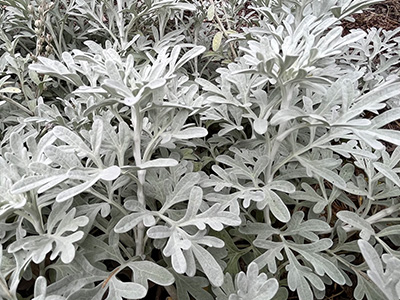Artemisia
Silver-leaved plants can help bring visual contrast into your landscape, and artemisia is an excellent example.

This group of cold-hardy perennials works well in the front of flower beds, or as transitional plants between colorful annuals.
Most artemisia varieties have foliage that’s small in scale with a feathery look and a fuzzy texture. The foliage is also highly aromatic.
The biggest challenge with artemisia is that Florida’s humid, wet summers sometimes cause the plants to rot. To help prevent problems, make sure to plant artemisia in well-drained soil in full sun or part shade.
A subspecies of Artemisia dracunculus is the culinary herb known as tarragon. Tarragon is a perennial with very narrow, pointed, dark green leaves. The plant, which reaches a height of 2 feet, does not fare well in Florida due to summer heat and humidity. If you do try, set transplants in the spring, 1 foot apart. Fresh leaves may be used, or dry them rapidly away from light so they will not turn dark. Store in tight jars to preserve the licorice aroma.
Artemisia even has an interesting history. Artemisia tridentata, (“big sagebrush” or “sagebrush”) is the state flower of Nevada. Artemisia annua, mainly grown in Asia, is the source of an important antimalarial medicine. And another species that’s commonly known as wormwood (Artemisia absinthium) is used to make the fabled drink known as absinthe. But don’t try this at home—this plant is poisonous. The absinthe beverage is created with only selective extracts of the plant.
